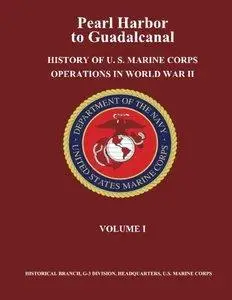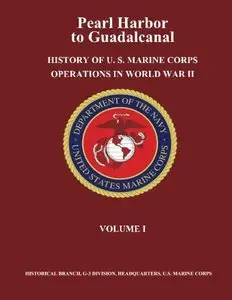USMCR Lieutenant Colonel Frank O. Hough, USMC Major Verle E. Ludwig, Jr. Henry I. Shaw, "Pearl Harbor to Guadalcanal: History of U. S. Marine Corps Operations in World War II, Volume I"
2013 | ISBN: 1481969250 | 462 pages | EPUB, MOBI | 12 MB
2013 | ISBN: 1481969250 | 462 pages | EPUB, MOBI | 12 MB
This book, “Pearl Harbor to Guadalcanal: History of U. S. Marine Corps Operations in World War II, Volume I,” covers Marine Corps participation through the first precarious year of World War II, when disaster piled on disaster and there seemed no way to check Japanese aggression. Advanced bases and garrisons were isolated and destroyed; Guam, Wake, and the Philippines. The sneak attack on Pearl Harbor, “day that will live in infamy,” seriously crippled the U. S. Pacific Fleet; yet that cripple rose to turn the tide of the entire war at Midway. Shortly thereafter, the U. S. Marines launched on Guadalcanal an offensive which was destined to end only on the home islands of the Empire. The country in general, and the Marine Corps in particular, entered World War II in a better state of preparedness than had been the case in any other previous conflict. But that is a comparative term and does not merit mention in the same sentence with the degree of Japanese preparedness. What the Marine Corps did bring into the way, however, was the priceless ingredient developed during the years of pence: the amphibious doctrines and techniques that made possible the trans-Pacific advance – and, for that matter, the invasion of North Africa and the European continent. By publishing this operations history in a durable form, it is hoped to make the Marine Corps record permanently available for the study of military personnel, the edification of the general public, and the contemplation of serious scholars of military history.



